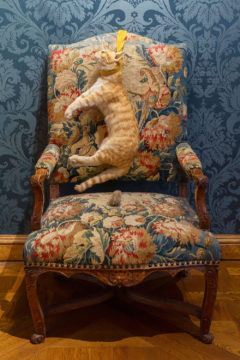Alice Blackhurst at n+1:

photographed and edited by Claire Dorn
IN 2017, amid the peak of #balancetonporc, France’s equivalent #MeToo movement, record-breaking crowds of women, keen for an experience of communal catharsis, passed through Sophie Calle’s Beau doublé, Monsieur le marquis!—perhaps as foil against the somber cultural malaise elsewhere. The exhibition, a collaboration between Calle and artist Serena Cocone, was hosted at the Musée de la Chasse et de la Nature, in Paris, where among taxidermy wild animals and a fetishist’s array of hunting armory, a selection of Calle’s previous projects, including excerpts from the ongoing text work Des histoires vraies (True Stories) and her 1981 piece La Filature (The Shadow), were reactivated alongside new ones. What might have been an unusual location for the work of an internationally acclaimed artist whose brand chords more with the starry entourages of Fashion Week than with dusty 18th-century archives was, in this case, perfectly apt: Calle, who in Suite vénitienne (one of her earliest works) followed a male acquaintance to Venice on a whim after a brief conversation at a cocktail party, has remained committed throughout her career to exposing and subverting the dynamics of the “chase” that patterns heterosexual life. In a minimally furnished room on the second floor, two new, inter-related series, Le chasseur français (The French hunter) and A l’espère (Lying in wait for), scoured these themes of carnal conquest once more.
more here.
